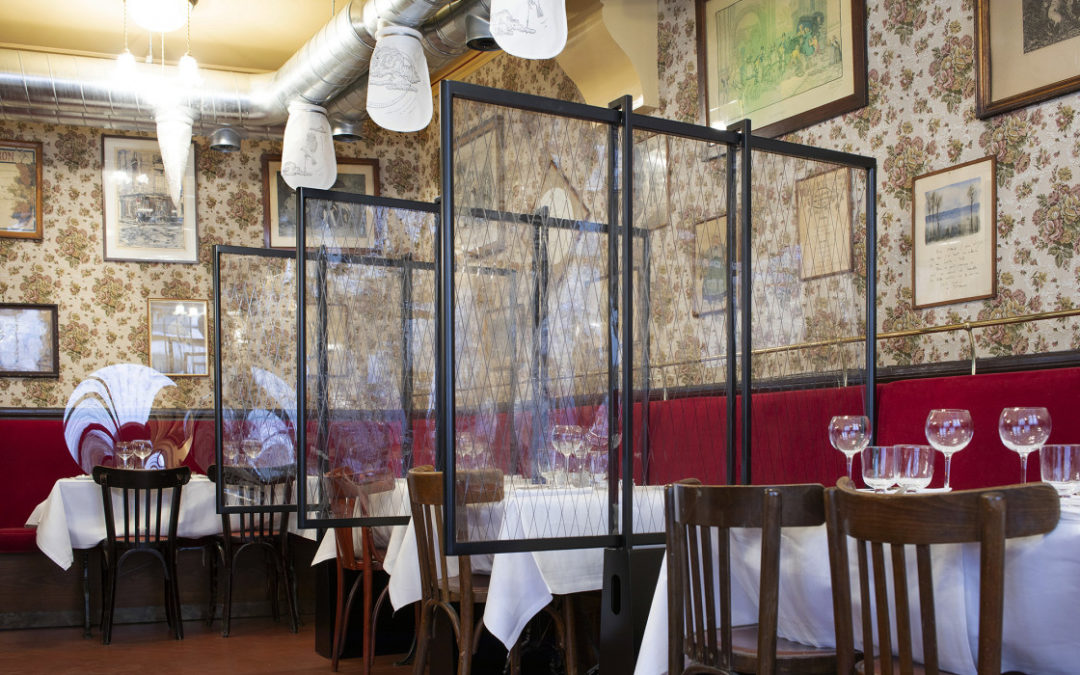A prototype of the screen and ventilation system, led by starred chef Alain Ducasse and designer Patrick Jouin, was tested in June 2020 at the Allard restaurant in Paris.
© Philippe Vaures Santa Maria
Running an establishment is no picnic for hoteliers and restaurateurs at Covid-19 time. However, in addition to emergency solutions such as “click & collect”, some are taking advantage of the opportunity to rethink the way they receive, welcome and serve… They are innovating and adapting by already projecting themselves into the post-crisis period.
For the past year, an entire sector has been reviewing its way of operating. Hoteliers and restaurateurs are rethinking their profession in the midst of a long-term health crisis. The “click & collect” system allows some of them to remain open. But sometimes it’s just a band-aid on a wooden leg. We have to go further. To dare. Invent. Experiment. At the Monte Cristo Hotel in Paris, it’s bubbling with excitement, as if this 4-star hotel had never experienced a crisis. If, of course, he is going through it, like everyone else. But Florian Bitker, the operations director of the les Hôteliers impertinents group, of which the Monte Cristo is a part, never stops testing, stalling, adjusting a strategy, sometimes from one week to the next. Result: since May 2020, the hotel’s occupancy rate has fluctuated between 32% and 77%. A performance compared to a Parisian average of around 15%. But Florian Bitker took the risk of a 50% average price loss. On the bright side, his employees come to work between three and five days a week. A dynamic that binds a team together and encourages it to think outside the box. Examples: the manager of the hotel’s rum bar bottles his cocktails for take-away sales, and one room has been transformed into a tasting lounge. Boldness and offers in very original versions are good allies to move forward these days. You can also see it in the restaurants. After his “fish & chips” in “delivery”, the one star chef Guillaume Sanchez proposes a cheeseburger to take away, in his Parisian restaurant Neso. More bucolic: “Alain’s baskets”. Available at l’Arpège, Alain Passard‘s table also in Paris, they are filled with a selection of vegetables brought from the three-starred chef’s vegetable garden.
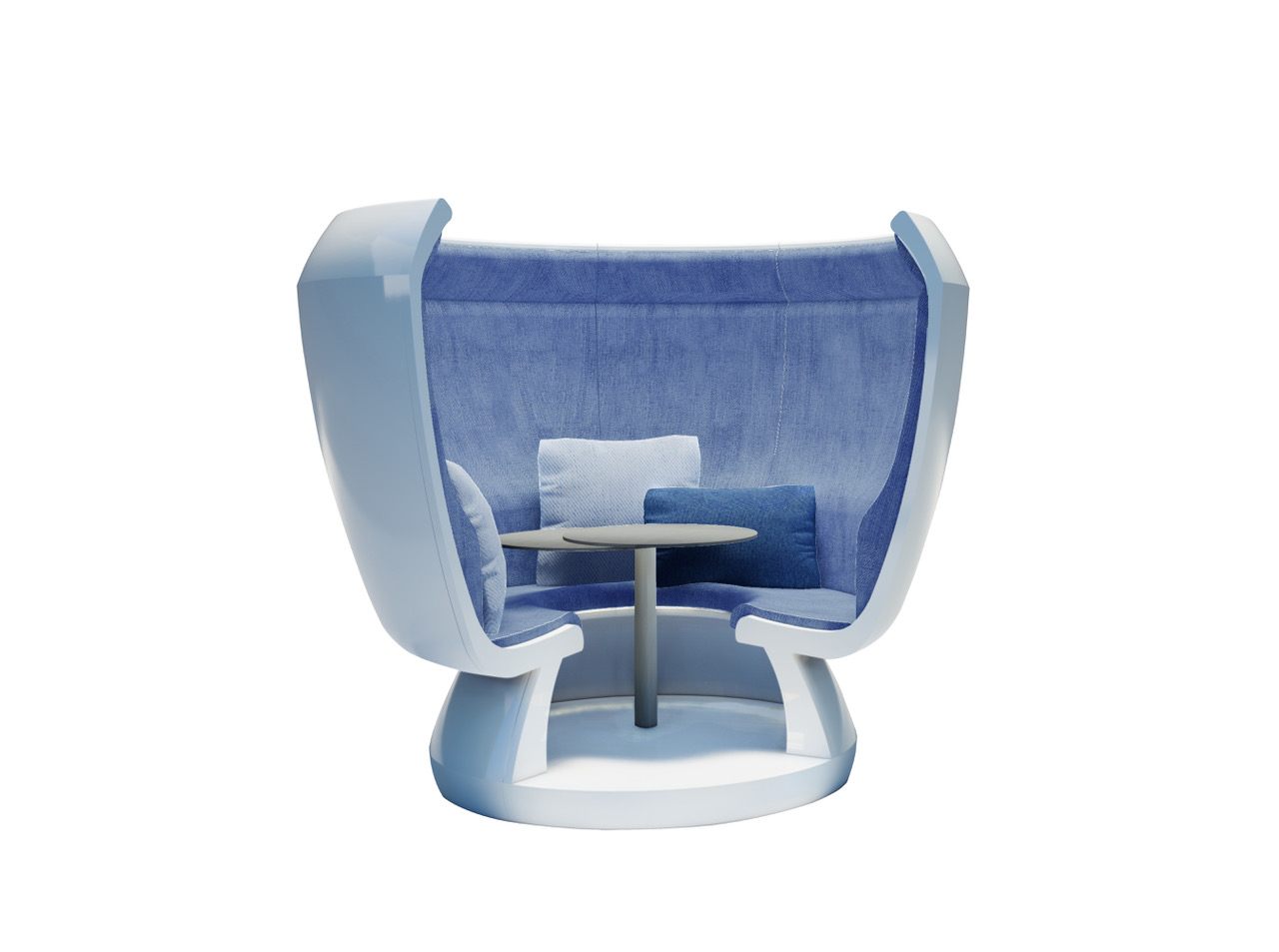
Nidum: the cocoon imagined by the MHNA studio to “stay in its own bubble, safe from the Covid”.
© DR
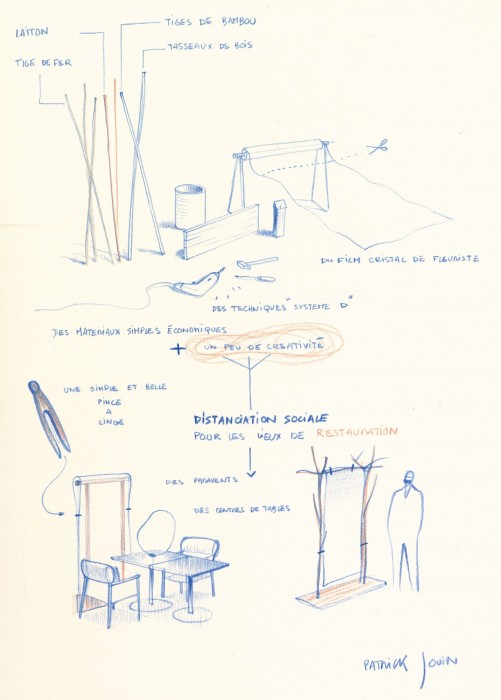
Drawings and sketches of the project “Social distancing for restaurants” by Patrick Jouin
@Patrick Jouin
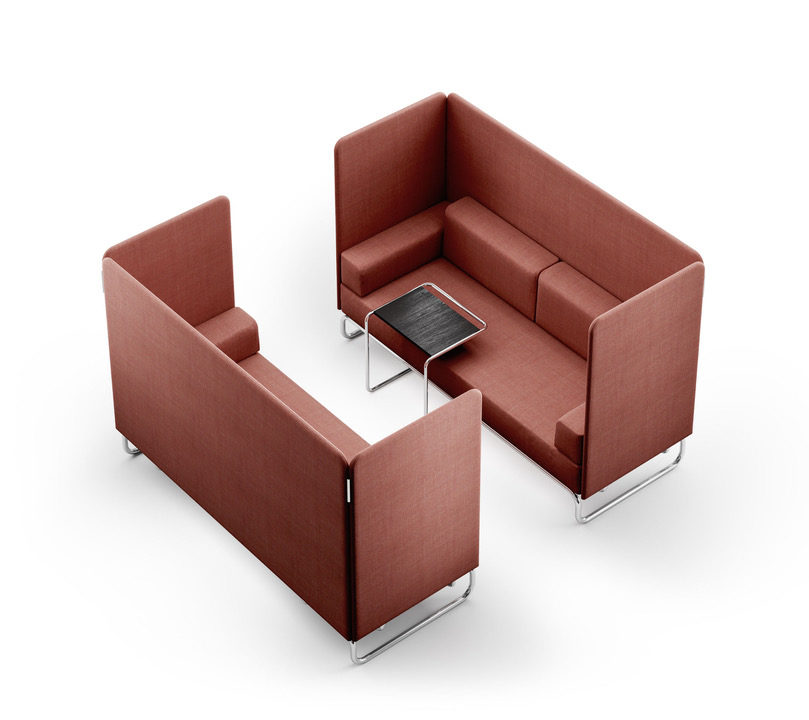
The S 5000 Retreat in Thonet is intended to be a space free of any nuisance, respectful of social distancing.
© DR
” Table concierge” and “cocoon to stay in your own bubble”.
What about tomorrow? When some people still find it difficult to project themselves into the future, others think seriously about it. Even if it means envisaging a future in which we will have to deal with viruses and their variants. During the first confinement, chef Yannick Alléno took the time to work on “another way of thinking about the three-star restaurant”. With the complicity of consultant Erik Perey, he led a reflection that resulted in a book entitled Tout doit changer! (Everything has to change!). What service for the great restaurant. In this book, he talks about the “ultra-personalisation” of the service offered to customers, thanks to the implementation of a “table concierge service”. His principle: before, during and after the meal, everything is done to meet the customer’s tastes and expectations as closely as possible. The three-starred chef also evokes the installation of veils between the tables, to intensify the exclusive side of a lunch or dinner, but also to avoid promiscuity with neighbours. A problem that also inspires designers and interior architects. Like Patrick Jouin who, as early as the spring of 2020, worked with starred chef Alain Ducasse, doctors from the Pitié-Salpêtrière hospital and the architect Arnaud Delloye, on a system that combines screens and ventilation. The windscreens, created from recycled and recyclable tank sails, separate the tables of a restaurant, and above each one, a ventilation system combines a fresh air outlet and an extraction device. Another example: this fall, the MHNA studio, founded by Marc Hertrich and Nicolas Adnet, a duo accustomed to working in the hospitality sector, came up with Nidum, which means nest or cocoon in Latin. Because it is this notion of protection, comfort and even reassurance that customers will be looking for as soon as the restaurants reopen. Marc Hertrich and Nicolas Adnet talk about “staying in your own bubble, safe from the Covid”. Hence Nidum, which they have designed to accommodate one to four people, in an alcove with a high, slightly curved backrest, with a central table and soft cushions placed on a circular sofa bench that follows the rounded shape of the cocoon. Same desire to protect within the Thonet house. The furniture manufacturer has now presented the S 5000 Retreat. It is a reinterpretation of the Thonet meridian by Studio Irvine. It offers a space that is protected from view, noise and other disturbances. More elegant and enveloping than plastic or plexiglass partitions, these cocoon benches could find their place in the restaurants of tomorrow. Barrier actions and social distancing are a must.
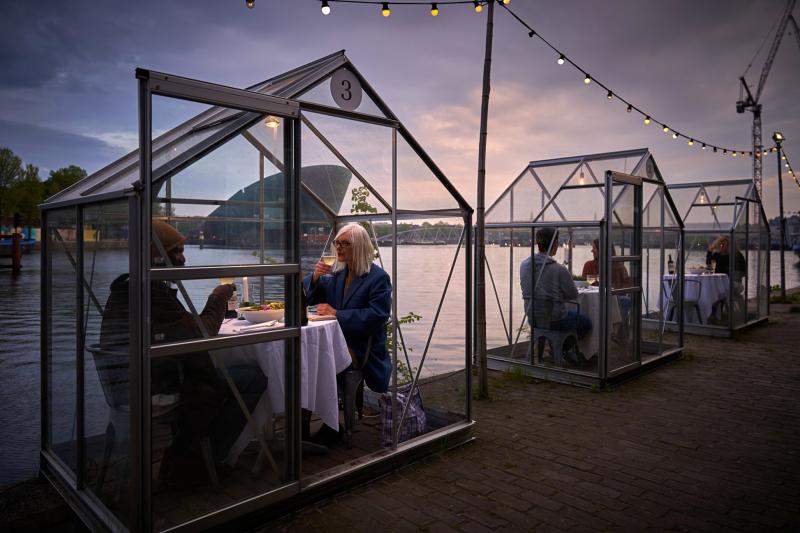
A greenhouse for two: that’s what the restaurant Mediamatic Eten in Amsterdam offers, for lunch or dinner by the canal. Photo: @willem velthoven
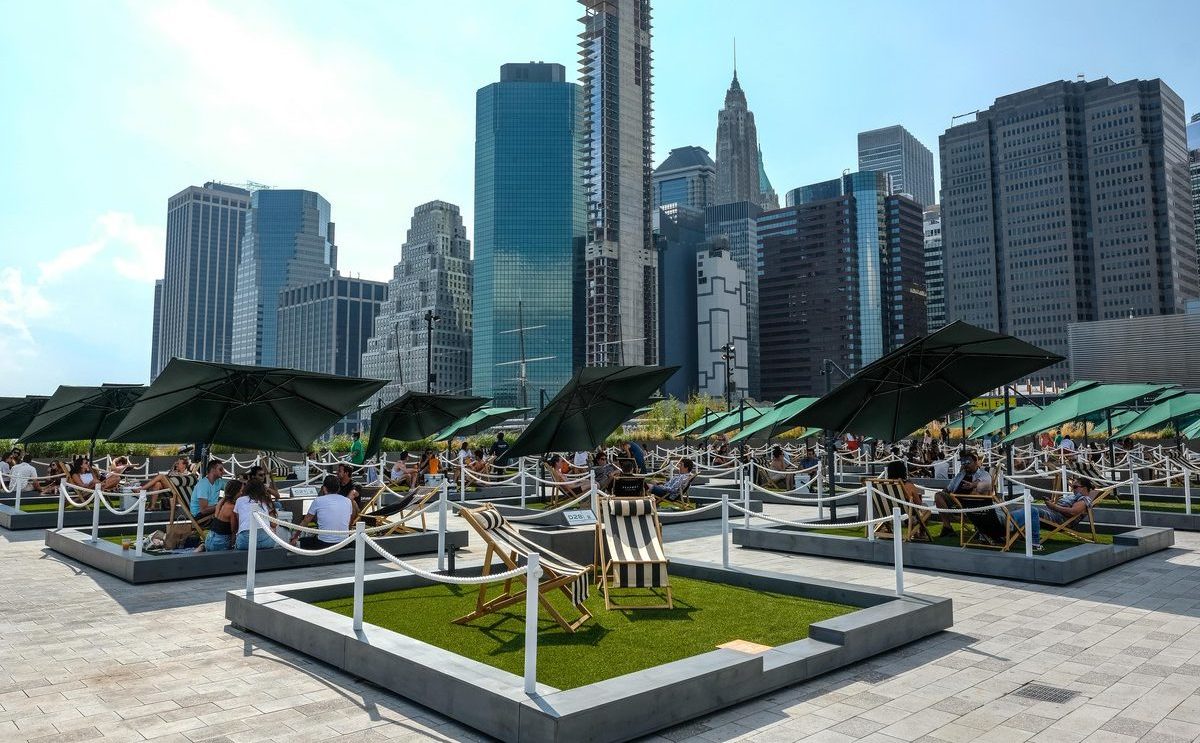
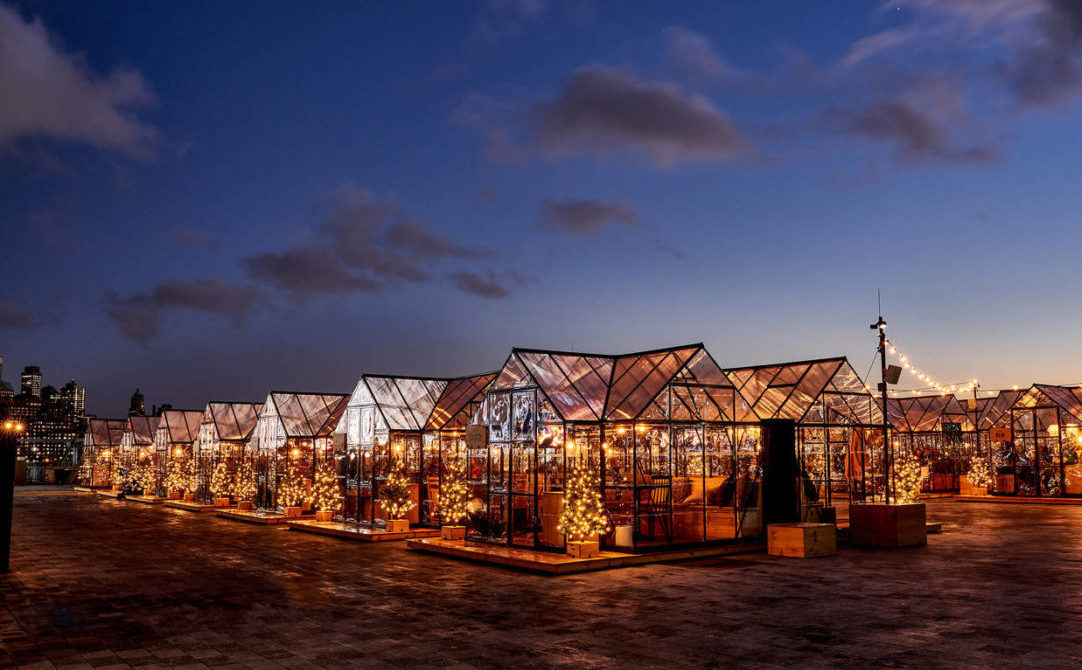
Glass cabins or landscaped green islands can accommodate small committees at Pier 17, facing the Brooklyn Bridge.
Photos: @The Howard Hughes Corporation/Giada Paoloni
Green islands in New York and glass greenhouses in Amsterdam
Finally, at the international level too, solutions are being sought. On its rooftop facing the Brooklyn Bridge, Pier 17, in New York, offers small islands of greenery on which deckchairs, coffee tables and parasols are set up to accommodate a dozen guests. This is the summer version. In winter, all-glass cabins, arranged like small lounges, replace the lush green islands. In the same spirit, the Mediamatic Eten restaurant in Amsterdam has set up glass greenhouses, each with a table for two people. Guests preferably already living under the same roof. These capsules, placed on the canal side, offer a breathtaking view of the city. It remains to be seen whether they will spread their influence in the Venice of the North.
Article written by Anne Eveillard for Talent Developer
